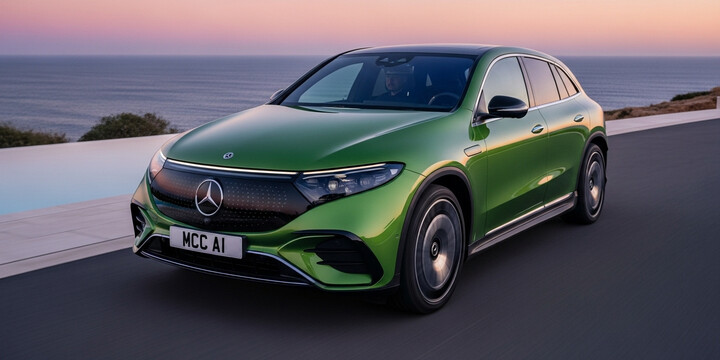
MERCEDES-BENZ EQE SUV (2023-) EQE AMG53 4MATIC+ 5DR SUV 0.0 ELECTRIC 91KWH 625 TOURING 22KW CHARGER AUTO
The Mercedes-Benz EQE SUV AMG53 4MATIC+ (2023-) is a luxurious and stylish all-electric SUV that stands out in the UK market as a high-performance, eco-friendly family car. With its sleek design, spacious interior, and advanced electric technology, this model offers a smooth and quiet driving experience, perfect for daily commuting, family outings, or long-distance journeys. The EQE SUV features a robust 91kWh battery, providing impressive range, and quick charging capabilities of up to 22kW, ensuring convenience for everyday use. Its high-end features and refined comfort make it ideal for buyers seeking a premium electric vehicle with a sporty edge.
What makes the Mercedes-Benz EQE SUV AMG53 particularly notable is its blend of cutting-edge design, powerful performance, and innovative technology, setting it apart from rivals like the Audi e-tron or BMW iX. Although exclusive and brand-loyal, it shines in comfort, reliability, and advanced driver-assistance features, making it a top choice for families, executives, or eco-conscious drivers wanting an SUV that combines luxury with sustainability. With a strong reputation in its class, the EQE AMG53 is a compelling pick for anyone looking to enter the electric SUV market with a vehicle that's both refined and practical.

average use

Based on the latest recorded mileage data for the Mercedes-Benz EQE SUV (2023-), it appears that 100% of the vehicles in the sample have mileage readings between 0 and 10,000 miles. This suggests that these vehicles are very new and likely have low usage, reflecting their recent manufacturing date and potentially high residual value.

vehicle values

The private sale valuations for the Mercedes-Benz EQE SUV (2023-) AMG53 4MATIC+ 5DR model show a relatively even distribution across four price ranges: £88,000–£89,000, £102,000–£103,000, £93,000–£94,000, and £105,000–£106,000. Each of these ranges accounts for 25% of the observed private sales, indicating no single price point dominates the market. Notably, the data suggests a wide price spread, reflecting possible variations in vehicle condition, specification, or seller expectations. Overall, this distribution illustrates a diverse private sale market for this high-end electric SUV, with key valuation points around the mid to high £90,000s and the low £100,000s.

production years

The data indicates that the majority of the listed Mercedes-Benz EQE SUV vehicles are manufactured in 2024, accounting for 50%. Vehicles from 2023 make up 25%, while the remaining 25% are from 2025. This distribution highlights a significant concentration of recent models produced in 2024, suggesting a relatively fresh fleet with only a quarter from the following year and a quarter from two years prior, possibly reflecting common purchase patterns or stock turnover in this segment.

colour popularity

The data indicates that among the sampled Mercedes-Benz EQE SUV vehicles, black is the most common main paint colour, representing 50% of the fleet. Silver and grey are equally less frequent, each accounting for 25%. This suggests that black is a popular choice for this model, possibly reflecting consumer preferences for a classic and sophisticated look, while silver and grey are less favored but still present in the market.

ownership cycle

The data indicates that all observed vehicles of the model "MERCEDES-BENZ EQE SUV (2023-) EQE AMG53 4MATIC+ 5DR SUV 0.0 ELECTRIC 91KWH 625 TOURING 22KW CHARGER AUTO" have only had a single registered keeper. This suggests that, at least within the sample, these vehicles are typically registered and retained by their original owners, reflecting a tendency for these vehicles to remain with the initial registered individual or organization rather than changing hands frequently in the early stages of ownership.

engine choices

The data indicates that all sampled vehicles of the Mercedes-Benz EQE SUV (2023-) EQE AMG53 4MATIC+ are electric, with a consistent primary fuel type across the sample. Notably, the engine capacity information is not available for any of these vehicles, which is expected given that they are fully electric models and do not have traditional internal combustion engines. This emphasizes the importance of fuel type data over engine capacity for electric vehicles.












